Red Lobster’s bankruptcy isn’t a story about the recklessness of having endless shrimp on offer — it’s a story of how private equity firms bled a restaurant chain dry, leaving workers and diners adrift.
May 25, 2024
Source: Jacobin
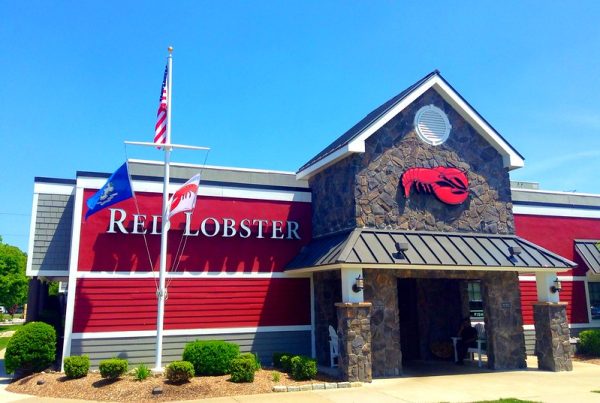
Red Lobster restaurant. Photo: Mike Mozart
Red Lobster has reached the bottom of the treasure chest and filed for bankruptcy. While some locations will stay open while the lawyers and accountants sort things out, other locations will be shuttered — some already have been — and assets will be sold off as part of its “restructuring.” Us diners are bracing to lose a great, affordable chain.
As the restaurant announced its bankruptcy filing, the mainstream take was “blame the endless shrimp.” That was the hook, anyway. If you read behind the headline, you’d see there’s more to it. The pandemic crushed restaurants, small and large, including Red Lobster. Inflation, exacerbated by the pandemic, further compounded the challenges, as fewer people opted to dine out after the shutdowns. While the chain was already poorly managed and in decline before COVID-19 arrived, all anyone wants to talk about is the endless crustaceans. The story, of course, is more complex.

Red Lobster restaurant. Photo: Mike Mozart
Red Lobster has reached the bottom of the treasure chest and filed for bankruptcy. While some locations will stay open while the lawyers and accountants sort things out, other locations will be shuttered — some already have been — and assets will be sold off as part of its “restructuring.” Us diners are bracing to lose a great, affordable chain.
As the restaurant announced its bankruptcy filing, the mainstream take was “blame the endless shrimp.” That was the hook, anyway. If you read behind the headline, you’d see there’s more to it. The pandemic crushed restaurants, small and large, including Red Lobster. Inflation, exacerbated by the pandemic, further compounded the challenges, as fewer people opted to dine out after the shutdowns. While the chain was already poorly managed and in decline before COVID-19 arrived, all anyone wants to talk about is the endless crustaceans. The story, of course, is more complex.
It’s Not About Endless Shrimp
The endless shrimp line is a convenient and easily digestible reason for Red Lobster’s sinking fate, and it’s sort of true. Behind it, however, lies a much more insidious story. As Cory Doctorow notes, the actual reason for the seafood chain’s woes is private equity and “another hedge-fund, bust-out scam.”
Doctorow argues that “ten years of being bled out on rents and flipped from one hedge fund to another has killed Red Lobster.” He makes a good case for why private equity and deep cynicism are to blame — a plan to tear down an affordable, beloved restaurant to make some cash for wealthy investors.
The means by which the decline came about are somewhat complicated, but the top-line takeaway, as Luke Goldstein argues, is an unholy alliance of private equity and seafood industry monopolies and monopsonies — single-buyers — that concentrated power and allowed the suits to dismantle the chain and sell it for parts.
In one particularly cynical move, Red Lobster’s past private equity owner, Golden Gate Capital, sold off the chain’s real estate and leased it back to the restaurants. As Goldstein points out, that netted the company $1.5 million — most of the $2.1 billion it cost them to buy it in the first place — and left the chain vulnerable to rising lease costs. In short, Red Lobster didn’t die. It was murdered.
Red Lobster was a target because, as Doctorow notes, “the people who patronize them have little power in our society.” It’s a rotten deal for anyone who loved a nice meal at a decent price, and a great bargain for corporate raiders who couldn’t care less about anything or anyone beyond dividends and bonuses.
Concentrated Wealth Is Concentrated Power
Monopoly, monopsony, and behemoth private equity firms are a massive problem. The concentration of wealth in the market is also a concentration of power. And that power stacks. The more heft you have to throw around, the more capital you have access to, the easier it is to direct the market in ways favorable to those who already hold most of the marbles. Once you reach a certain scale, it’s easy to decide which companies live, which ones die, who wins, and who loses. Of course, working-class folks are the ones who tend to lose.
In 2019, Nicole Aschoff made the case for banning private equity. She argued that these corporate raider giants were too big, too willing to buy anything they could abuse for a buck, entrenched, cynical, and predatory beyond belief. As if that weren’t enough, they’re also fond of using worker money by way of pension funds to execute their, well, executions. Aschoff’s case for putting down these beasts is all the more persuasive today.
Even if we entertained the capitalist myth of self-regulating, self-directing, efficient markets that keep operators in check — a belief that’s hard to swallow under any circumstance — we would have to explain how private equity is anomalous to the functioning of capitalism rather than native to it. Of course, the answer is that it’s not anomalous.
Capitalism fosters the pooling of power — the concentration of wealth — and the compound effect has far-reaching consequences. This concentration undermines state capacity, suppresses worker wages, and has adverse effects on working conditions, market prices, and the variety of firms in the marketplace. Whether it’s Walmart or Amazon or Ticketmaster or whomever, the concentration of power under capitalism is the rule, not the exception, as Karl Marx clearly explained more than 150 years ago. Private equity, with its ability to shape and dismantle markets, is merely another manifestation of this fundamental dynamic.
Ban Private Equity
While this issue may seem, at a glance, to be a distant or academic concern — to return to Doctorow’s point about who suffers — it’s very much a real problem for working-class people. They’ll ultimately end up with one fewer option for a decent, affordable restaurant — chain or not — to grab a meal (and delicious biscuits) with family or friends. There’s nothing merely theoretical or academic about that.
Capitalism functions to keep worker wages low, but with private equity at the helm, even the reprieve of a little consumer satisfaction — a nice treat for all that exploitation wage-laborers endure — is off the table. We’re told that sacrificing social welfare and submitting to the ruthlessness of the untethered market is worthwhile for the sake of capitalism’s productive energy and the abundance of choice it supposedly offers. But the trajectory of private equity leads to conditions reminiscent of Soviet-style bread lines, albeit without even the pretense of universal health care, free higher education, subsidized housing, or job guarantees.
As Aschoff argued five years ago, the answer is to ban massive private equity firms who stand in opposition to the interests of workers and the public. These firms exist not to serve businesses or consumers, and certainly not to serve workers, but to make a quick buck for investors who tend to be many times removed from the communities and realities their decisions affect. So, they’ve got to go. In their place, we can bring back endless shrimp.
How a global seafood giant broke Red Lobster
Nathaniel Meyersohn, CNN
Sat, May 25, 2024
When seafood conglomerate Thai Union Group became Red Lobster’s leading shareholder in 2020, gaining 49% control of the chain, Red Lobster employees were assured Thai Union would not interfere in key decisions.
Thai Union will “not be involved in Red Lobster’s day-to-day operations, including [its] supply chain standards and processes,” according to a document titled “Seafood Supplier Talking Points” viewed by CNN that was approved by top Thai Union and Red Lobster executives.
“We intend to maintain relationships with all current seafood suppliers,” the talking points said.
Those pledges didn’t last.
By 2022, representatives from Thai Union in Thailand, whose $4 billion empire includes brands like Chicken of the Sea and John West Foods, were embedded in Red Lobster’s Orlando headquarters, serving in top roles and closely directing the largest seafood restaurant chain in the world.
“We are much deeper involved in the management of Red Lobster,” Thai Union finance chief Ludovic Garnier said on an analyst call in November 2022.
Now, Red Lobster has drowned in a relentless supply of Thai Union-supplied shrimp. Red Lobster filed for Chapter 11 bankruptcy Sunday, and it plans to sell its business to its lenders. In turn, Red Lobster will receive financing to stay afloat.
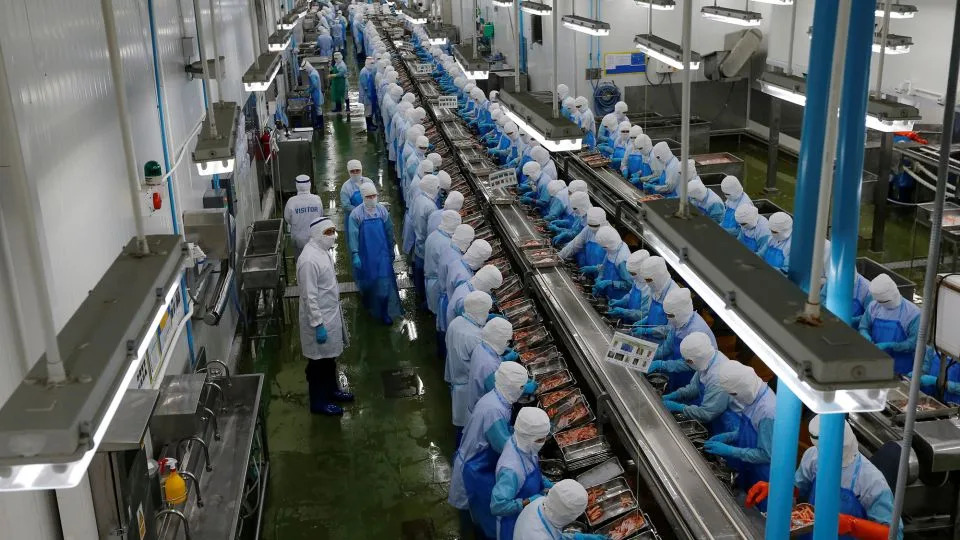
A Thai Union shrimp peeling plant in 2016. Thai Union is one of the world's largest seafood distributors and was a longtime Red Lobster supplier. - Jorge Silva/Reuters
Thai Union’s damaging decisions drove the pioneering chain’s fall, according to 13 former Red Lobster executives and senior leaders in various areas of the business as well as analysts. All but two of the former Red Lobster employees spoke to CNN under the condition of anonymity because of either non-disclosure agreements with Thai Union; fear that speaking out would harm their careers; or because they don’t want to jeopardize deferred compensation from Red Lobster.
Thai Union earlier this year blamed the Covid-19 pandemic, as well as “sustained industry headwinds, higher interest rates and rising material and labor costs” for Red Lobster’s struggles.
In a statement to CNN, Thai Union said it “has a been a supplier to Red Lobster for more than 30 years, and we intend for that relationship to continue.” A bankruptcy process “will allow Red Lobster to restructure its financial obligations and realize its long-term potential in a more favorable operating environment,” the company said. Thai Union did not respond to CNN’s questions about the specific allegations raised in this story.
Former Red Lobster employees say that while the pandemic, inflation and rent costs impacted Red Lobster, Thai Union’s ineptitude was the pivotal factor in Red Lobster’s decline.
“It was miserable working there for the last year and a half I was there,” said Les Foreman, a West Coast division vice president who worked at Red Lobster for 20 years and was fired in 2022. “They didn’t have any idea about running a restaurant company in the United States.”
Thai Union asserts control
At Red Lobster headquarters, employees prided themselves on a fiercely loyal culture and low turnover. Some employees had been with the chain for 30 and 40 years.
But as Thai Union installed executives at the chain, dozens of veteran Red Lobster leaders with deep knowledge of the brand and restaurant industry were fired or resigned in rapid succession. Red Lobster ended up having five CEOs in five years.
Thai Union CEO Thiraphong Chansiri visited Red Lobster’s headquarters in 2022 and toured restaurants around the country. He brought along a feng shui consultant named Angel to Orlando, former senior leaders at Red Lobster headquarters told CNN. The consultant determined that executive offices in Orlando were “bad Feng shui and no one should use them,” one former leader told CNN. The executive offices sat empty.
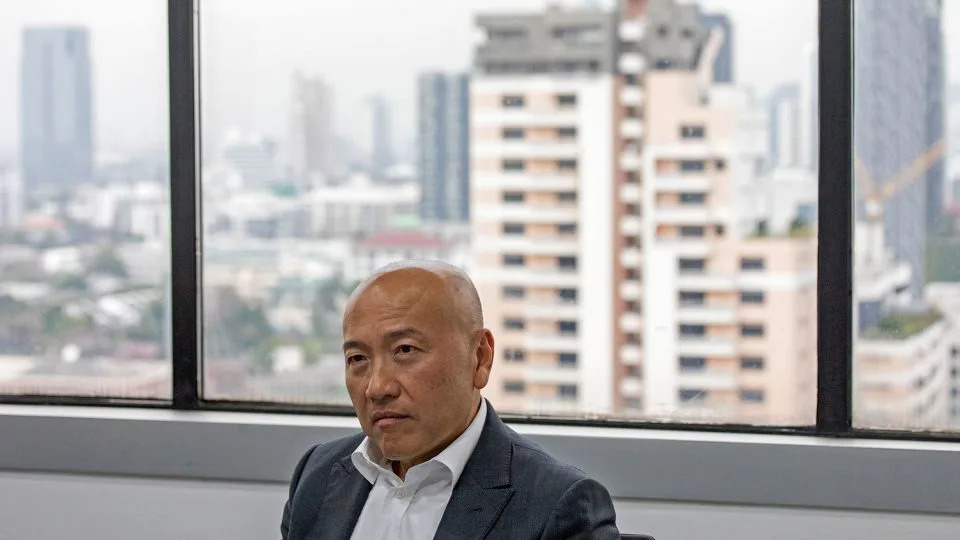
Thai Union CEO Thiraphong Chansiri in 2017. Chansiri swore he would never eat lobster again after the company divested from Red Lobster this year. - Amanda Mustard/Bloomberg/Getty Images
Former Red Lobster employees describe a toxic and demoralizing environment as Thai Union-appointed executives descended on headquarters and interim CEO Paul Kenny eventually took over the chain in 2022. Kenny, an Australian-born former CEO of Minor Food, one of Asia’s largest casual dining and quick-service restaurants, was part of the Thai Union-led investor group that acquired Red Lobster.
Kenny criticized Red Lobster employees at meetings and made derogatory comments about them, according to former Red Lobster leaders who worked closely with Kenny. Commenting on a woman’s weight at a Red Lobster annual conference in 2022 in Dallas as she walked across a stage to accept an award, Kenny said, “we need to institute an exercise program in this company,” another former Red Lobster executive told CNN.
Kenny did not respond to CNN’s requests for comment on these allegations.
Under Kenny, Red Lobster also cut two of its longtime shrimp suppliers— and competitors to Thai Union — to purchase more shrimp from Thai Union at higher costs, according to Red Lobster’s bankruptcy filing. Kenny’s decision came “in apparent coordination with Thai Union and under the guise of a ‘quality review,’” Red Lobster said.
These changes culminated in a $20 endless shrimp promotion in 2023 that would come back to haunt Red Lobster.
“Thai Union exercised an outsized influence on the Company’s shrimp purchasing,” Red Lobster alleged in its bankruptcy filing. Red Lobster said it was “investigating whether Mr. Kenny’s decision-making process circumvented the Company’s normal supply chain and demand planning.”
Thai Union told CNN that Red Lobster’s accusations in the bankruptcy filing were “meritless,” and the company looks forward to a “full representation of the facts.”
Red Lobster also slowed investments in dining room upgrades, raised prices and cut labor under Thai Union, former executives and operations leaders say. These decisions pushed away customers and cut into Red Lobster’s sales. Red Lobster’s annual customer count has dropped by 30% since 2019, Red Lobster said in its bankruptcy filing.
Paul Kenny steps in
Red Lobster was started in 1968 by Bill Darden, an architect of the casual dining revolution in America. General Mills quickly bought Red Lobster and in 1995 spun the chain off into a new company, Darden Restaurants, named after its founder.
In 2014, Darden sold Red Lobster to Golden Gate Capital, a private equity firm, for $2.1 billion. To help fund the deal, Red Lobster spun off its real estate. The arrangement wound up hurting Red Lobster because it became stuck with leases it no longer could afford to pay as the business struggled.
Two years later, Thai Union took a $575 million minority stake in Red Lobster. In 2020, Thai Union expanded that stake, leading an investor group to buy out Golden Gate Capital and acquire Red Lobster.
During the first half of 2021, Red Lobster posted an operating profit, and Thai Union touted Red Lobster’s strength on calls with analysts and company presentations.
“Red Lobster’s turnaround continued amid the pandemic,” Thai Union said in a quarterly earnings presentation in August of 2021. There was “clear improvement in Red Lobster operations.”
Red Lobster re-hired 26,000 employees from January to August of 2021, Thai Union said in the presentation, and appointed Kelli Valade CEO. Valade brought on a new leadership team, including a new head of finance, chief marketing officer and chief information officer.
But Kenny, then a Red Lobster board member, soon began exercising more control.

Paul Kenny (left) was Red Lobster's interim CEO for nearly 1.5 years after Kelli Valade (right) resigned in 2022. - Red Lobster Seafood Co.
In early 2022, Kenny began visiting Red Lobster’s headquarters more frequently and touring restaurants, former Red Lobster employees who worked closely with Kenny say.
At a tense board meeting in late March 2022, Kenny disagreed with Valade that significant further investment was needed in Red Lobster, according to a former Red Lobster leader. He chastised Red Lobster’s management team, which included Valade’s three recently hired executives, this person said. Within 48 hours, Valade resigned, just eight months into her tenure. Another Red Lobster board member who had decades of experience running casual dining restaurants in the United States resigned a day after.
Valade was appointed Denny’s CEO two months later. She did not respond to CNN’s requests for comment.
Severe cuts
Kenny was initially described in a press release announcing Valade’s resignation as a “liaison” between Red Lobster’s leadership and the board of directors “during this time of transition.”
But, at the direction of Thai Union, Kenny became interim CEO, according to Red Lobster’s bankruptcy filing.
In the months after Kenny took over, Valade’s leadership team and other veteran leaders left. In July of 2022, the chief operations officer and six vice presidents of operations overseeing restaurants were abruptly fired shortly before Red Lobster’s annual general manager conference.
Kenny appointed a Thai Union frozen seafood manager, Trin Tapanya, as Red Lobster’s chief operations officer overseeing restaurants. Tapanya had no experience running restaurants. He did not respond to CNN’s requests for comment.
Other Thai Union representatives also became more closely involved across Red Lobster’s supply chain, finance, operations and strategy teams.
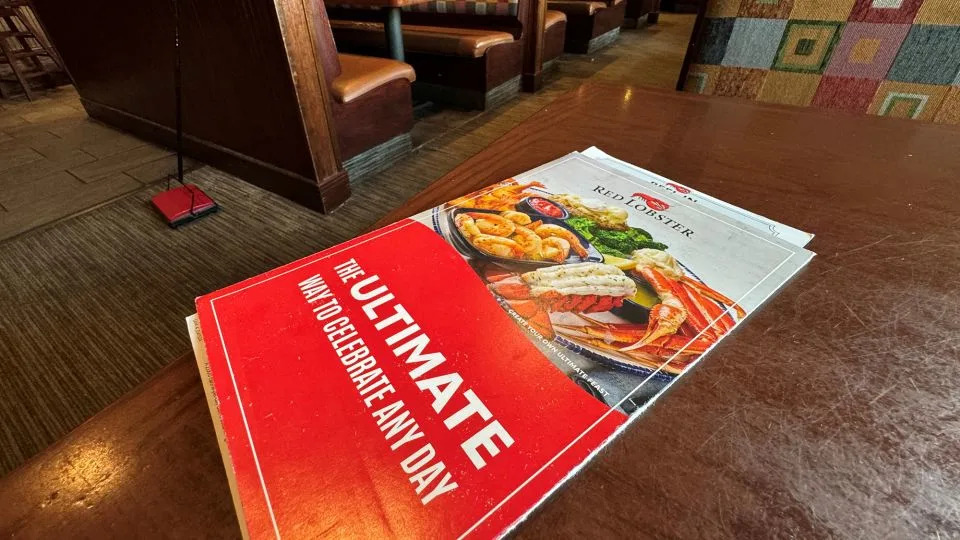
Under Thai Union, Red Lobster made cost-cutting decisions that drove away customers. - Kevin Lamarque/Reuters
Under Kenny, changes to restaurant operations and menus alienated customers and staff and hurt sales. Red Lobster started charging for a side salad for the first time, angering some customers.
“When you spend $43.99 for a meal the salad should be part of it,” one customer said recently on Facebook. “Texas Roadhouse does not charge extra for a side salad. Red Lobster was my favorite place to eat, but no longer.”
The chain started leaving tails on shrimp in pasta and eliminated sauté stations in kitchens to save on labor costs, according to a different former Red Lobster employee.
It also squeezed Red Lobster’s waitstaff, switching from servers covering three tables to 10 and removing a host at the entrance during lunch hours. Thai Union said at the time it was to improve customer service, but former Red Lobster employees say the change taxed restaurant staff.
Overstretched restaurant staff had fewer managers and cooks than ever, said Barry Fulghum, who started out as a dishwasher at Red Lobster in the 1970s and worked his way up to become an operations director, retiring last year.
“There would be times we would have one or two people working the kitchen line,” he said. “What those cooks did on the line was amazing given the staffing situation they were dealt.”
Removing longtime suppliers
Meanwhile, Thai Union took a larger role in Red Lobster’s supply chain decisions, despite pledges in 2020 that it would not interfere.
Red Lobster had spent decades developing a wide array of suppliers to buy at competitive prices and mitigate the risks of becoming too reliant on any single supplier.
Thai Union blew that up.
Red Lobster employees say they were pressured by Thai Union representatives to buy more seafood from Thai Union. Thai Union representatives also began sitting in on meetings between Red Lobster and seafood suppliers, said one of the former Red Lobster employees who witnessed these conversations. Thai Union was the direct competitor of these other seafood suppliers, and suddenly had intimate access to their products, prices and strategy.
“Our suppliers were really upset that [Thai Union representatives] were in those meetings with them,” this person said.
Shrimp dishes also became a larger focus of Red Lobster’s menu under Thai Union, which was a large shrimp supplier to Red Lobster.
“Every promotion was shrimp-centric,” this person said.
Endless shrimp
Then came the endless shrimp.
Endless shrimp had been a successful limited-time promotion at Red Lobster for nearly 20 years. But last summer, Red Lobster turned $20 “Ultimate Endless Shrimp” into a permanent menu item instead.
Kenny had been warned by Red Lobster leaders that $20 was too cheap to make a profit, according to a former employee who witnessed these conversations. But Red Lobster went ahead, turning it into an everyday offer in June 2023 and pushing the promotion heavily.
(Kenny’s decision was met with “significant pushback from other members of the [company’s] management team,” Red Lobster also said in its bankruptcy filing.)

Red Lobster closed more than 90 restaurants, including this one in Silver Spring, Maryland, before filing for bankruptcy Sunday. - Leah Millis/Reuters
“We have a very, very bold proposition for the consumers in the US. It’s $20, so it’s really affordable,” Thai Union finance chief Ludovic Garnier said on an earnings call in August 2023.
But the move backfired.
Customers sat at tables for long stretches of time, eating course after course of shrimp. Service slowed and wait times grew.
Red Lobster lost $11 million following the deal, its bankruptcy filing states.
Endless shrimp was an embarrassment for Red Lobster, spoofed on Comedy Central’s “The Daily Show” and social media. To former Red Lobster employees, it was the latest sign Thai Union was ill-suited to run the chain.
Thai Union announced in January it was divesting from Red Lobster and taking a $530 million loss on its investment. A month later, Thai Union CEO Chansiri said the company was looking to sell the chain.
Red Lobster, he said, “is done [and] over with.”
Nathaniel Meyersohn, CNN
Sat, May 25, 2024
When seafood conglomerate Thai Union Group became Red Lobster’s leading shareholder in 2020, gaining 49% control of the chain, Red Lobster employees were assured Thai Union would not interfere in key decisions.
Thai Union will “not be involved in Red Lobster’s day-to-day operations, including [its] supply chain standards and processes,” according to a document titled “Seafood Supplier Talking Points” viewed by CNN that was approved by top Thai Union and Red Lobster executives.
“We intend to maintain relationships with all current seafood suppliers,” the talking points said.
Those pledges didn’t last.
By 2022, representatives from Thai Union in Thailand, whose $4 billion empire includes brands like Chicken of the Sea and John West Foods, were embedded in Red Lobster’s Orlando headquarters, serving in top roles and closely directing the largest seafood restaurant chain in the world.
“We are much deeper involved in the management of Red Lobster,” Thai Union finance chief Ludovic Garnier said on an analyst call in November 2022.
Now, Red Lobster has drowned in a relentless supply of Thai Union-supplied shrimp. Red Lobster filed for Chapter 11 bankruptcy Sunday, and it plans to sell its business to its lenders. In turn, Red Lobster will receive financing to stay afloat.

A Thai Union shrimp peeling plant in 2016. Thai Union is one of the world's largest seafood distributors and was a longtime Red Lobster supplier. - Jorge Silva/Reuters
Thai Union’s damaging decisions drove the pioneering chain’s fall, according to 13 former Red Lobster executives and senior leaders in various areas of the business as well as analysts. All but two of the former Red Lobster employees spoke to CNN under the condition of anonymity because of either non-disclosure agreements with Thai Union; fear that speaking out would harm their careers; or because they don’t want to jeopardize deferred compensation from Red Lobster.
Thai Union earlier this year blamed the Covid-19 pandemic, as well as “sustained industry headwinds, higher interest rates and rising material and labor costs” for Red Lobster’s struggles.
In a statement to CNN, Thai Union said it “has a been a supplier to Red Lobster for more than 30 years, and we intend for that relationship to continue.” A bankruptcy process “will allow Red Lobster to restructure its financial obligations and realize its long-term potential in a more favorable operating environment,” the company said. Thai Union did not respond to CNN’s questions about the specific allegations raised in this story.
Former Red Lobster employees say that while the pandemic, inflation and rent costs impacted Red Lobster, Thai Union’s ineptitude was the pivotal factor in Red Lobster’s decline.
“It was miserable working there for the last year and a half I was there,” said Les Foreman, a West Coast division vice president who worked at Red Lobster for 20 years and was fired in 2022. “They didn’t have any idea about running a restaurant company in the United States.”
Thai Union asserts control
At Red Lobster headquarters, employees prided themselves on a fiercely loyal culture and low turnover. Some employees had been with the chain for 30 and 40 years.
But as Thai Union installed executives at the chain, dozens of veteran Red Lobster leaders with deep knowledge of the brand and restaurant industry were fired or resigned in rapid succession. Red Lobster ended up having five CEOs in five years.
Thai Union CEO Thiraphong Chansiri visited Red Lobster’s headquarters in 2022 and toured restaurants around the country. He brought along a feng shui consultant named Angel to Orlando, former senior leaders at Red Lobster headquarters told CNN. The consultant determined that executive offices in Orlando were “bad Feng shui and no one should use them,” one former leader told CNN. The executive offices sat empty.

Thai Union CEO Thiraphong Chansiri in 2017. Chansiri swore he would never eat lobster again after the company divested from Red Lobster this year. - Amanda Mustard/Bloomberg/Getty Images
Former Red Lobster employees describe a toxic and demoralizing environment as Thai Union-appointed executives descended on headquarters and interim CEO Paul Kenny eventually took over the chain in 2022. Kenny, an Australian-born former CEO of Minor Food, one of Asia’s largest casual dining and quick-service restaurants, was part of the Thai Union-led investor group that acquired Red Lobster.
Kenny criticized Red Lobster employees at meetings and made derogatory comments about them, according to former Red Lobster leaders who worked closely with Kenny. Commenting on a woman’s weight at a Red Lobster annual conference in 2022 in Dallas as she walked across a stage to accept an award, Kenny said, “we need to institute an exercise program in this company,” another former Red Lobster executive told CNN.
Kenny did not respond to CNN’s requests for comment on these allegations.
Under Kenny, Red Lobster also cut two of its longtime shrimp suppliers— and competitors to Thai Union — to purchase more shrimp from Thai Union at higher costs, according to Red Lobster’s bankruptcy filing. Kenny’s decision came “in apparent coordination with Thai Union and under the guise of a ‘quality review,’” Red Lobster said.
These changes culminated in a $20 endless shrimp promotion in 2023 that would come back to haunt Red Lobster.
“Thai Union exercised an outsized influence on the Company’s shrimp purchasing,” Red Lobster alleged in its bankruptcy filing. Red Lobster said it was “investigating whether Mr. Kenny’s decision-making process circumvented the Company’s normal supply chain and demand planning.”
Thai Union told CNN that Red Lobster’s accusations in the bankruptcy filing were “meritless,” and the company looks forward to a “full representation of the facts.”
Red Lobster also slowed investments in dining room upgrades, raised prices and cut labor under Thai Union, former executives and operations leaders say. These decisions pushed away customers and cut into Red Lobster’s sales. Red Lobster’s annual customer count has dropped by 30% since 2019, Red Lobster said in its bankruptcy filing.
Paul Kenny steps in
Red Lobster was started in 1968 by Bill Darden, an architect of the casual dining revolution in America. General Mills quickly bought Red Lobster and in 1995 spun the chain off into a new company, Darden Restaurants, named after its founder.
In 2014, Darden sold Red Lobster to Golden Gate Capital, a private equity firm, for $2.1 billion. To help fund the deal, Red Lobster spun off its real estate. The arrangement wound up hurting Red Lobster because it became stuck with leases it no longer could afford to pay as the business struggled.
Two years later, Thai Union took a $575 million minority stake in Red Lobster. In 2020, Thai Union expanded that stake, leading an investor group to buy out Golden Gate Capital and acquire Red Lobster.
During the first half of 2021, Red Lobster posted an operating profit, and Thai Union touted Red Lobster’s strength on calls with analysts and company presentations.
“Red Lobster’s turnaround continued amid the pandemic,” Thai Union said in a quarterly earnings presentation in August of 2021. There was “clear improvement in Red Lobster operations.”
Red Lobster re-hired 26,000 employees from January to August of 2021, Thai Union said in the presentation, and appointed Kelli Valade CEO. Valade brought on a new leadership team, including a new head of finance, chief marketing officer and chief information officer.
But Kenny, then a Red Lobster board member, soon began exercising more control.

Paul Kenny (left) was Red Lobster's interim CEO for nearly 1.5 years after Kelli Valade (right) resigned in 2022. - Red Lobster Seafood Co.
In early 2022, Kenny began visiting Red Lobster’s headquarters more frequently and touring restaurants, former Red Lobster employees who worked closely with Kenny say.
At a tense board meeting in late March 2022, Kenny disagreed with Valade that significant further investment was needed in Red Lobster, according to a former Red Lobster leader. He chastised Red Lobster’s management team, which included Valade’s three recently hired executives, this person said. Within 48 hours, Valade resigned, just eight months into her tenure. Another Red Lobster board member who had decades of experience running casual dining restaurants in the United States resigned a day after.
Valade was appointed Denny’s CEO two months later. She did not respond to CNN’s requests for comment.
Severe cuts
Kenny was initially described in a press release announcing Valade’s resignation as a “liaison” between Red Lobster’s leadership and the board of directors “during this time of transition.”
But, at the direction of Thai Union, Kenny became interim CEO, according to Red Lobster’s bankruptcy filing.
In the months after Kenny took over, Valade’s leadership team and other veteran leaders left. In July of 2022, the chief operations officer and six vice presidents of operations overseeing restaurants were abruptly fired shortly before Red Lobster’s annual general manager conference.
Kenny appointed a Thai Union frozen seafood manager, Trin Tapanya, as Red Lobster’s chief operations officer overseeing restaurants. Tapanya had no experience running restaurants. He did not respond to CNN’s requests for comment.
Other Thai Union representatives also became more closely involved across Red Lobster’s supply chain, finance, operations and strategy teams.

Under Thai Union, Red Lobster made cost-cutting decisions that drove away customers. - Kevin Lamarque/Reuters
Under Kenny, changes to restaurant operations and menus alienated customers and staff and hurt sales. Red Lobster started charging for a side salad for the first time, angering some customers.
“When you spend $43.99 for a meal the salad should be part of it,” one customer said recently on Facebook. “Texas Roadhouse does not charge extra for a side salad. Red Lobster was my favorite place to eat, but no longer.”
The chain started leaving tails on shrimp in pasta and eliminated sauté stations in kitchens to save on labor costs, according to a different former Red Lobster employee.
It also squeezed Red Lobster’s waitstaff, switching from servers covering three tables to 10 and removing a host at the entrance during lunch hours. Thai Union said at the time it was to improve customer service, but former Red Lobster employees say the change taxed restaurant staff.
Overstretched restaurant staff had fewer managers and cooks than ever, said Barry Fulghum, who started out as a dishwasher at Red Lobster in the 1970s and worked his way up to become an operations director, retiring last year.
“There would be times we would have one or two people working the kitchen line,” he said. “What those cooks did on the line was amazing given the staffing situation they were dealt.”
Removing longtime suppliers
Meanwhile, Thai Union took a larger role in Red Lobster’s supply chain decisions, despite pledges in 2020 that it would not interfere.
Red Lobster had spent decades developing a wide array of suppliers to buy at competitive prices and mitigate the risks of becoming too reliant on any single supplier.
Thai Union blew that up.
Red Lobster employees say they were pressured by Thai Union representatives to buy more seafood from Thai Union. Thai Union representatives also began sitting in on meetings between Red Lobster and seafood suppliers, said one of the former Red Lobster employees who witnessed these conversations. Thai Union was the direct competitor of these other seafood suppliers, and suddenly had intimate access to their products, prices and strategy.
“Our suppliers were really upset that [Thai Union representatives] were in those meetings with them,” this person said.
Shrimp dishes also became a larger focus of Red Lobster’s menu under Thai Union, which was a large shrimp supplier to Red Lobster.
“Every promotion was shrimp-centric,” this person said.
Endless shrimp
Then came the endless shrimp.
Endless shrimp had been a successful limited-time promotion at Red Lobster for nearly 20 years. But last summer, Red Lobster turned $20 “Ultimate Endless Shrimp” into a permanent menu item instead.
Kenny had been warned by Red Lobster leaders that $20 was too cheap to make a profit, according to a former employee who witnessed these conversations. But Red Lobster went ahead, turning it into an everyday offer in June 2023 and pushing the promotion heavily.
(Kenny’s decision was met with “significant pushback from other members of the [company’s] management team,” Red Lobster also said in its bankruptcy filing.)

Red Lobster closed more than 90 restaurants, including this one in Silver Spring, Maryland, before filing for bankruptcy Sunday. - Leah Millis/Reuters
“We have a very, very bold proposition for the consumers in the US. It’s $20, so it’s really affordable,” Thai Union finance chief Ludovic Garnier said on an earnings call in August 2023.
But the move backfired.
Customers sat at tables for long stretches of time, eating course after course of shrimp. Service slowed and wait times grew.
Red Lobster lost $11 million following the deal, its bankruptcy filing states.
Endless shrimp was an embarrassment for Red Lobster, spoofed on Comedy Central’s “The Daily Show” and social media. To former Red Lobster employees, it was the latest sign Thai Union was ill-suited to run the chain.
Thai Union announced in January it was divesting from Red Lobster and taking a $530 million loss on its investment. A month later, Thai Union CEO Chansiri said the company was looking to sell the chain.
Red Lobster, he said, “is done [and] over with.”
Red Lobster employee sues chain saying she was laid-off without notice amid 50 restaurant closures
Graig Graziosi
Tue, May 21, 2024
A former employee is suing now-bankrupt Red Lobster for allegedly laying her off without notice.
Red Lobster filed for chapter 11 bankruptcy on 20 May, and announced the closure of more than 50 locations across the US.
Donna Lowe, a former worker, claims she was fired without warning in the new lawsuit. The filing — which is seeking class action status — accuses Red Lobster of violating the WARN Act and the New Jersey WARN Act. It is seeking declaratory and injunctive relief as well as damages, attorneys' fees, and costs, Bloomberg News reports.
The WARN Act is federal legislation requiring companies with 100 or more full-time employees to give workers at least 60 days' notice before a planned mass layoff. States like New Jersey have their own labor protections, often mirroring the federal WARN Act.
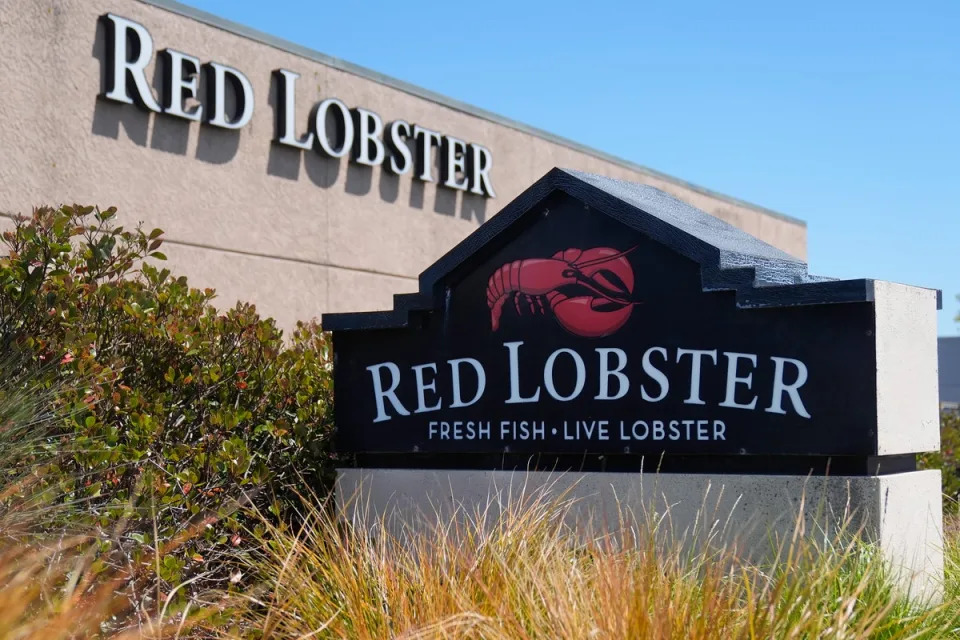
A former employee is suing Red Lobster for allegedly firing her without proper warning (stock image) (Copyright 2024 The Associated Press. All rights reserved)
Former employees who were told they were being let go took to social media to express their frustrations with the embattled seafood restaurant.
“I’m trying so hard to put on a smile right now. I feel like I could break at any moment,” a former worker posted on X, according to HR Grapvine. They claimed that the company broke federal labor laws by failing to give them a proper notice.
“What Red Lobster did in New York is illegal," they wrote. "They closed their doors with no warning. So now we are unemployed.”
It is not immediately clear how many people lost their jobs ahead of Red Lobster's bankruptcy filing.
“I lost my job today without warning and working Mother's Day yesterday,” another former employee posted on X. “I'm one of the lucky ones who don't have kids or a house to pay off. Just so terrible leaving all those employees with nothing, no notice, anything.”
Because Red Lobster filed a chapter 11 bankruptcy it can continue operating while it restructures its business. The chain announced that it would transfer control to its lenders, who have agreed to provide $100m in financing to support its continued operation.
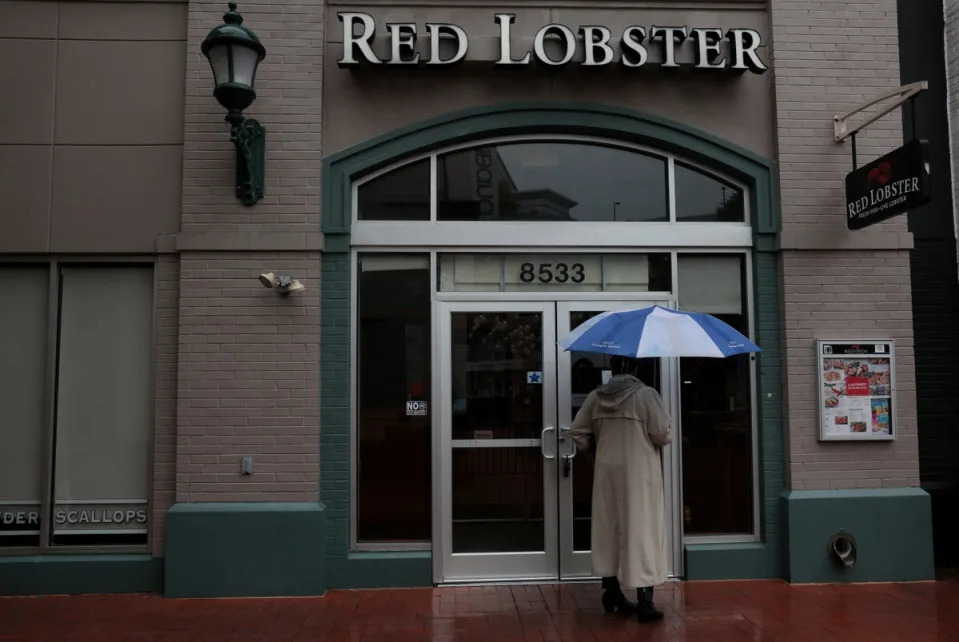
A person reads a sign taped to a door announcing the closure of a Red Lobster in Silver Spring, Maryland (REUTERS)
Red Lobster has been fighting to stay afloat since 2010, when it saw a decrease of 30 per cent in its customer visits. Sales continued to plummet over the last year, resulting in a $76m loss for fiscal year 2023.
Thai Union Group became a minority owner in Red Lobster in 2020, purchasing 49 per cent of the company, and its decisions have been blamed for contributing to the restaurant's current financial state.
One of those decisions was making the restaurant's "endless shrimp" promotion permanent. In the past, customers had a couple of weeks window in which they could visit the restaurant, pay $20, and receive "endless shrimp."
By making that offer permanent, the company lost an estimated $11m.
Earlier this year, Thai Union Group said it planned to sell its stake in Red Lobster, representing a $530m loss.
“Thai Union forced huge cost reductions, including many that were penny wise and pound foolish because they hurt sales,” an executive told CNN, requesting anonymity to avoid company backlash.
Since 2021, Red Lobster has had five CEOs.
Graig Graziosi
Tue, May 21, 2024
A former employee is suing now-bankrupt Red Lobster for allegedly laying her off without notice.
Red Lobster filed for chapter 11 bankruptcy on 20 May, and announced the closure of more than 50 locations across the US.
Donna Lowe, a former worker, claims she was fired without warning in the new lawsuit. The filing — which is seeking class action status — accuses Red Lobster of violating the WARN Act and the New Jersey WARN Act. It is seeking declaratory and injunctive relief as well as damages, attorneys' fees, and costs, Bloomberg News reports.
The WARN Act is federal legislation requiring companies with 100 or more full-time employees to give workers at least 60 days' notice before a planned mass layoff. States like New Jersey have their own labor protections, often mirroring the federal WARN Act.

A former employee is suing Red Lobster for allegedly firing her without proper warning (stock image) (Copyright 2024 The Associated Press. All rights reserved)
Former employees who were told they were being let go took to social media to express their frustrations with the embattled seafood restaurant.
“I’m trying so hard to put on a smile right now. I feel like I could break at any moment,” a former worker posted on X, according to HR Grapvine. They claimed that the company broke federal labor laws by failing to give them a proper notice.
“What Red Lobster did in New York is illegal," they wrote. "They closed their doors with no warning. So now we are unemployed.”
It is not immediately clear how many people lost their jobs ahead of Red Lobster's bankruptcy filing.
“I lost my job today without warning and working Mother's Day yesterday,” another former employee posted on X. “I'm one of the lucky ones who don't have kids or a house to pay off. Just so terrible leaving all those employees with nothing, no notice, anything.”
Because Red Lobster filed a chapter 11 bankruptcy it can continue operating while it restructures its business. The chain announced that it would transfer control to its lenders, who have agreed to provide $100m in financing to support its continued operation.

A person reads a sign taped to a door announcing the closure of a Red Lobster in Silver Spring, Maryland (REUTERS)
Red Lobster has been fighting to stay afloat since 2010, when it saw a decrease of 30 per cent in its customer visits. Sales continued to plummet over the last year, resulting in a $76m loss for fiscal year 2023.
Thai Union Group became a minority owner in Red Lobster in 2020, purchasing 49 per cent of the company, and its decisions have been blamed for contributing to the restaurant's current financial state.
One of those decisions was making the restaurant's "endless shrimp" promotion permanent. In the past, customers had a couple of weeks window in which they could visit the restaurant, pay $20, and receive "endless shrimp."
By making that offer permanent, the company lost an estimated $11m.
Earlier this year, Thai Union Group said it planned to sell its stake in Red Lobster, representing a $530m loss.
“Thai Union forced huge cost reductions, including many that were penny wise and pound foolish because they hurt sales,” an executive told CNN, requesting anonymity to avoid company backlash.
Since 2021, Red Lobster has had five CEOs.
No comments:
Post a Comment